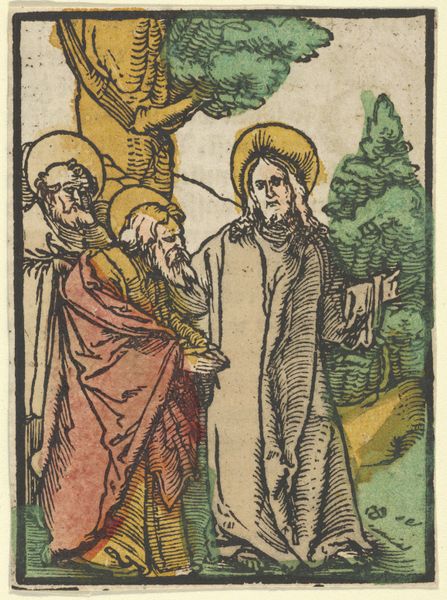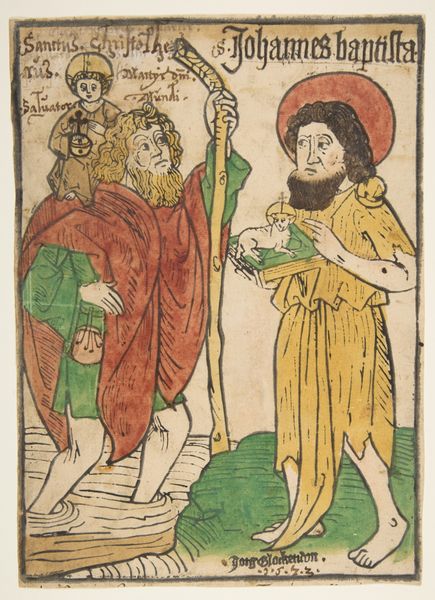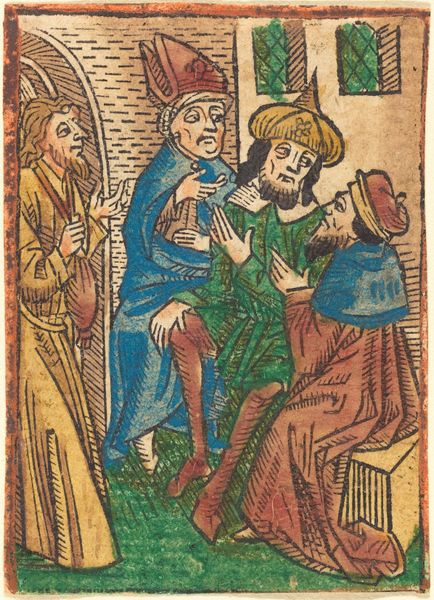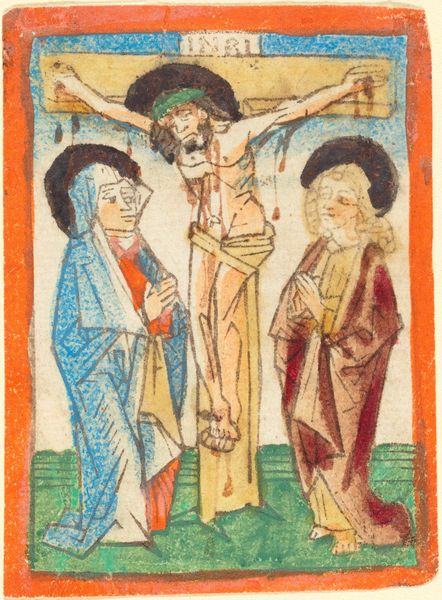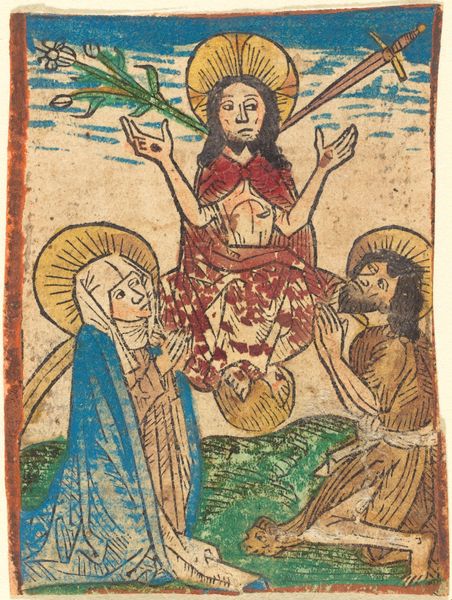
tempera, print, woodcut
#
medieval
#
ink painting
#
tempera
# print
#
figuration
#
woodcut
#
naive art
#
history-painting
Copyright: National Gallery of Art: CC0 1.0
Curator: Up next, we have an interesting piece titled "Baptism," believed to be from around 1490. This work is a woodcut print colored with tempera, created by an anonymous artist during the late medieval period. Editor: The first thing that strikes me is its small scale and vibrant, almost jewel-like colors. Despite the serious subject, there's a naive charm in the figures and landscape. Curator: Precisely. Woodcut prints like this one played a significant role in disseminating religious imagery among the broader population. This wasn't art destined for elite display; it was meant for more accessible, personal devotion. Editor: And the imagery itself is dense with symbolism. We see John the Baptist pouring water over Christ, signifying purification and spiritual rebirth. Even the presence of the angel acts as an age-old confirmation of this event’s spiritual gravity. It all feels like a direct visual translation of complex theology. Curator: Also, consider the politics embedded here. Lay piety was on the rise in the late 15th century, and prints such as these catered to a growing demand for religious experience outside of established Church structures. Editor: Looking closely, the composition directs my eye to the flowing water and Christ's gesture—it pulls together earthly action and symbolic meaning. There's a certain awkwardness to the figures, but that in turn speaks to the raw emotion. Curator: Indeed, and the printmaking process allowed for multiple copies to circulate. Therefore, works such as this one became key tools in shaping a shared visual culture, reinforcing specific beliefs throughout society. Editor: Absolutely, this seemingly simple image opens up discussions about faith, cultural memory, and the transformative power of water. What an incredible, accessible way for laymen of the 15th century to understand this holy moment. Curator: Indeed. Thinking about its function in a time of profound social change truly enriches our appreciation.
Comments
No comments
Be the first to comment and join the conversation on the ultimate creative platform.


